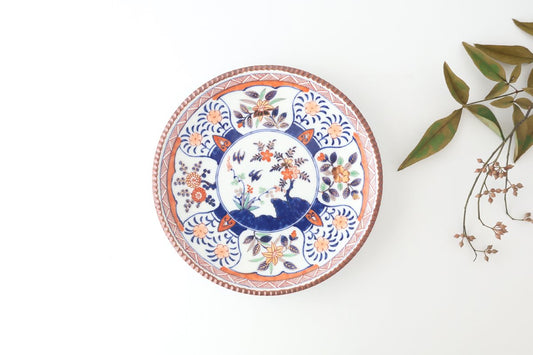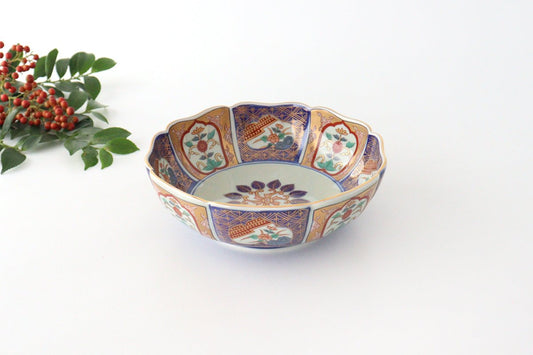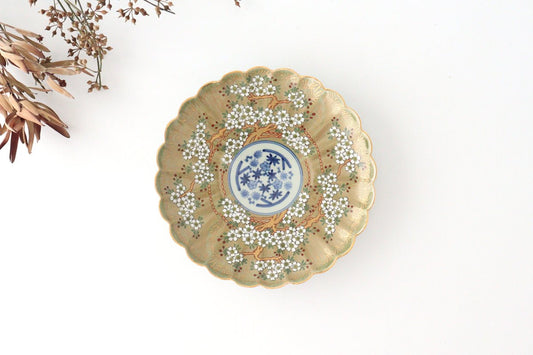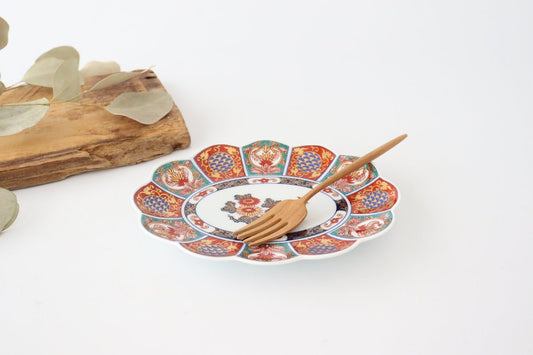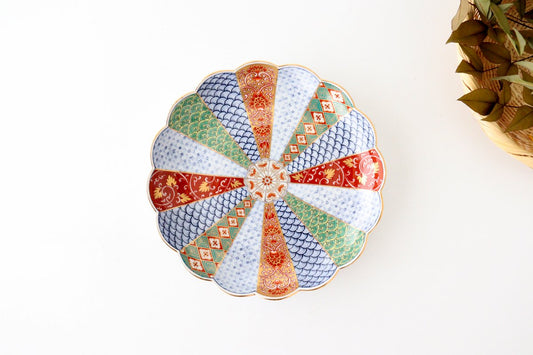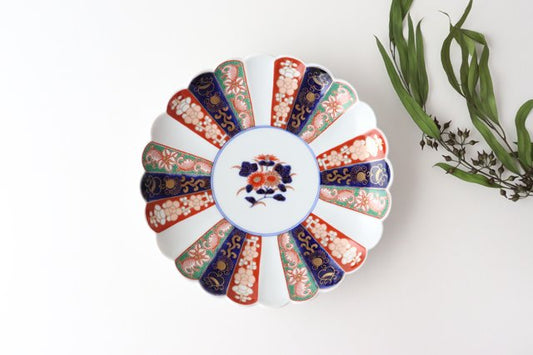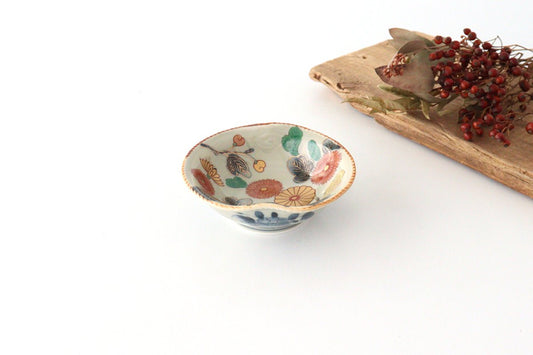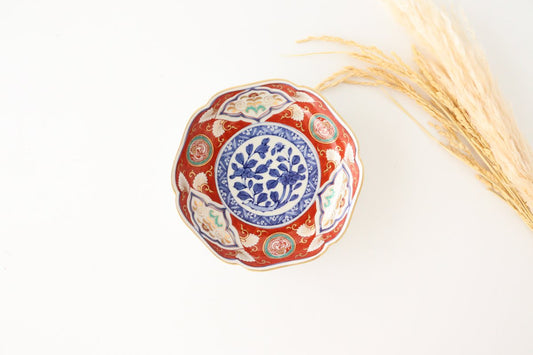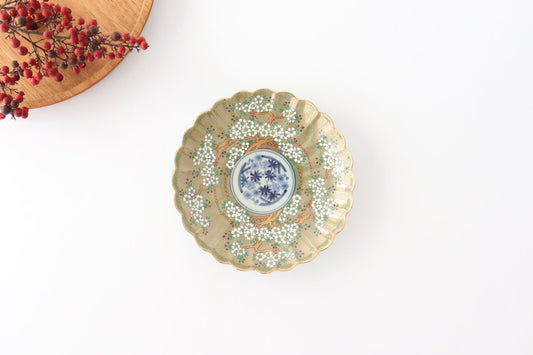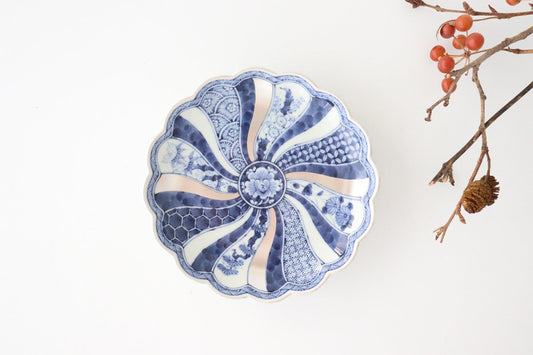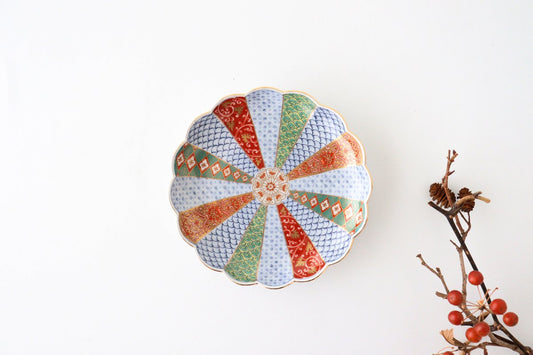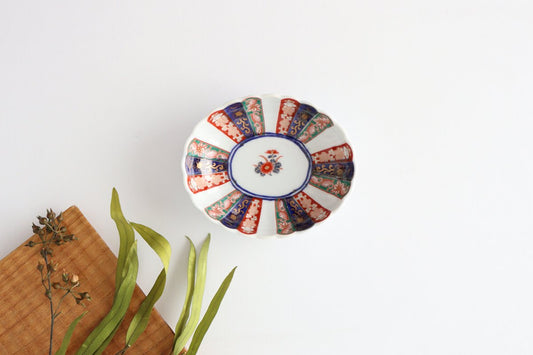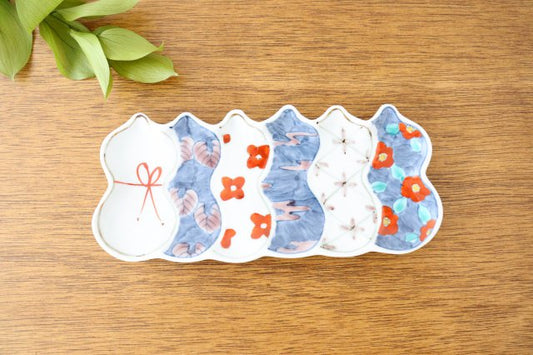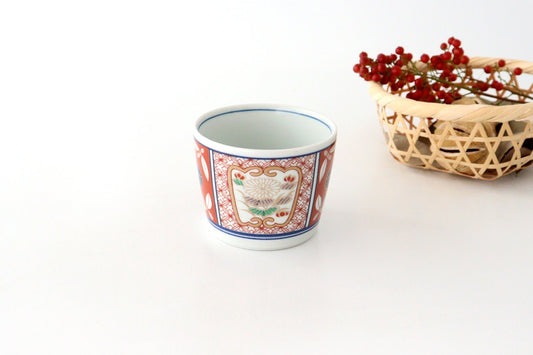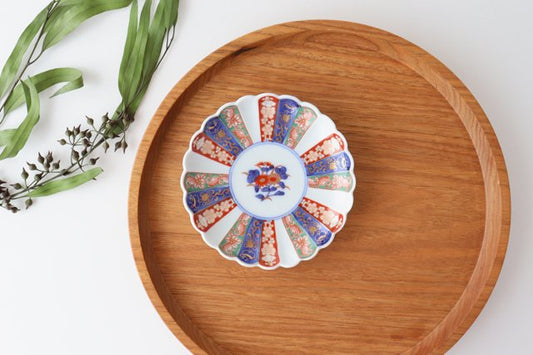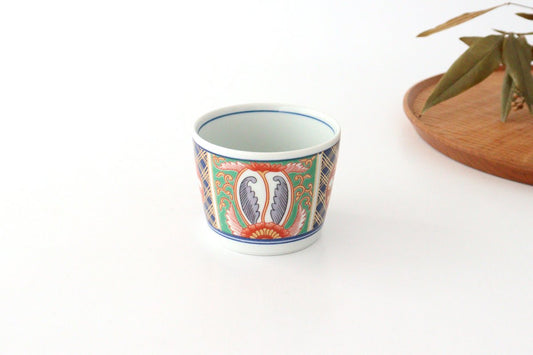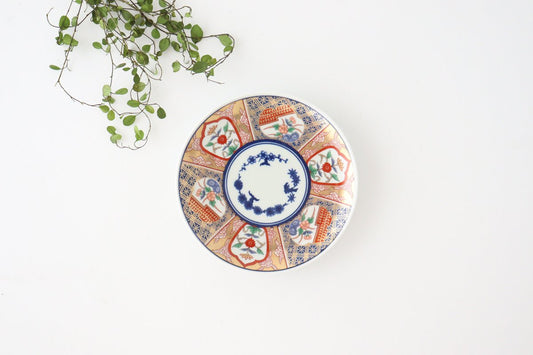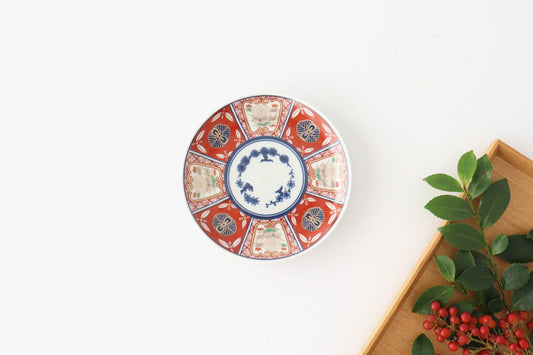Collection: Imari ware
What is Imari Ware?
Imari ware is a type of Japanese porcelain produced in and around Arita in Saga Prefecture, named after the port of Imari from which it was shipped. With a history of around 400 years, Imari ware is renowned for its beautiful decorations and high quality, characterized by vibrant colors and luxurious designs. Traditional Imari designs are often referred to as "Ko-Imari" or Old Imari.
Key Characteristics of Imari Ware
Iroe (Colored Painting): Known for its multi-colored, lavish designs, and painterly beauty.
Kinrande (Gold Decoration): Features luxurious designs with gold embellishments, exuding an air of opulence.
Seiji (Celadon): Simple yet elegant style, using blue-green glaze for a refined look.
Differences from Other Regions
While similar to Arita ware due to geographical proximity, Imari ware is distinct in its elaborate and high-end decorations. Compared to Hasami ware, Imari ware is more ornamental and luxurious, and it stands out with its intricate and vibrant painting compared to Mino ware.
Appeal of Imari Ware
Imari ware is highly esteemed both domestically and internationally for its exquisite decorations and superior quality. Balancing traditional techniques with modern design, it is suitable for everyday use and special occasions alike. Each piece, meticulously crafted by artisans, showcases precise craftsmanship and stunning beauty.
-
Rinkurou Kiln Round Plate Old Imari Flower and Tree 21cm/10.6in | Hasami Ware
Regular price $222.20 USDRegular priceUnit price / per -
Round Plate Old Imari Style Rinpa | Arita Ware
Regular price $160.00 USDRegular priceUnit price / per -
Rinkurou Kiln Deep Bowl Old Imari Flower Pattern | Serving Bowl Hasami Ware
Regular price $140.70 USDRegular priceUnit price / per -
Rinkurou Kiln Round Plate Old Imari Sakura Tree Pattern 18.5cm/7.3in | Hasami Ware
Regular price $112.60 USDRegular priceUnit price / per -
Rinkurou Kiln Oval Plate Old Imari Chrysanthemum Pattern 19cm/7.5in | Hasami Ware
Regular price $88.90 USDRegular priceUnit price / per -
Rinkurou Kiln Chrysanthemum Shaped Plate Old Imari Pattern Red&Green 19.5cm/7.7in | Hasami Ware
Regular price $83.00 USDRegular priceUnit price / per -
Rim Large Plate Nazuna Imari Ware | Arita Ware
Regular price $77.00 USDRegular priceUnit price / per -
Rinkurou Kiln Old Imari Chrysanthemum Pattern 18cm/7.1in | Hasami Ware
Regular price $74.10 USDRegular priceUnit price / per -
Kagami Mochi Bowl with Lid | Imari Ware
Regular price $71.10 USDRegular priceUnit price / per -
Round Plate Chrysanthemum Arabesque | Imari Ware
Regular price $69.60 USDRegular priceUnit price / per -
Rinkurou Kiln Small Bowl Old Imari Chrysanthemum Pattern | Kobachi Hasami Ware
Regular price $59.30 USDRegular priceUnit price / per -
Rinkurou Kiln Small Bowl Old Imari Style Flower-pattern | Kobachi Hasami Ware
Regular price $56.30 USDRegular priceUnit price / per -
Rinkurou Kiln Round Plate Old Imari Sakura Tree Pattern 15cm/5.9in | Hasami Ware
Regular price $56.30 USDRegular priceUnit price / per -
Rinkurou Kiln Chrysanthemum Shaped Plate Old Imari Pattern Blue&Silver 16cm/6.29in | Hasami Ware
Regular price $53.30 USDRegular priceUnit price / per -
Rinkurou Kiln Chrysanthemum Shaped Plate Old Imari Pattern Red&Green 15cm/5.9in | Hasami Ware
Regular price $53.30 USDRegular priceUnit price / per -
Octagonal Long Plate Imari Gourds | Sushi Plate Arita Ware
Regular price $53.30 USDRegular priceUnit price / per -
Donburi Bowl Old Imari | Arita Ware
Regular price $50.40 USDRegular priceUnit price / per -
Rinkurou Kiln Oval Small Bowl Old Imari Chrysanthemum Pattern | Kobachi Hasami Ware
Regular price $48.90 USDRegular priceUnit price / per -
Rim Bowl Nazuna Imari Ware|Serving Bowl Arita Ware
Regular price $47.40 USDRegular priceUnit price / per -
Long plate Imari Six Gourds | Sushi Plate Arita Ware
Regular price $45.90 USDRegular priceUnit price / per -
Rinkurou Kiln Soba Choko Old Imari Red Flower | Free Cup Hasami Ware
Regular price $44.40 USDRegular priceUnit price / per -
Round Donburi Bowl Old Imari S | Arita Ware
Regular price $43.00 USDRegular priceUnit price / per -
Rinkurou Kiln Sauce Plate Old Imari Chrysanthemum Pattern 9cm/3.5in | Hasami Ware
Regular price $38.50 USDRegular priceUnit price / per -
Rice Bowl Sho-chiku-bai Red | Imari Ware
Regular price $37.00 USDRegular priceUnit price / per -
Rice Bowl Sho-chiku-bai Blue | Imari Ware
Regular price $37.00 USDRegular priceUnit price / per -
Rinkurou Kiln Soba Choko Old Imari Blue and Gold Flower | Free Cup Hasami Ware
Regular price $35.60 USDRegular priceUnit price / per -
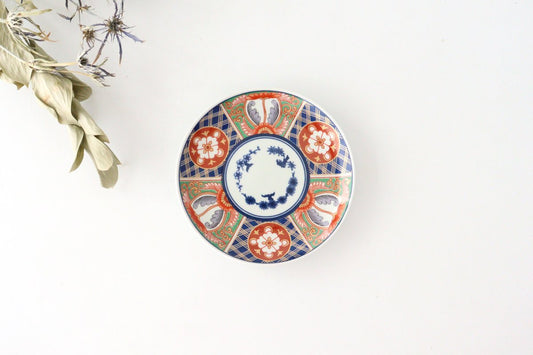
Rinkurou Kiln Small Round Plate Old Imari Style Blue&Gold Flower Pattern 12cm/4.7in | Hasami Ware
Regular price $35.60 USDRegular priceUnit price / per -
Imari Gourd Rice Bowl Small | Arita Ware
Regular price $34.10 USDRegular priceUnit price / per -
Sauce Plate Chrysanthemum and Arabesque | Imari Ware
Regular price $28.10 USDRegular priceUnit price / per -
Small Plate Old Imari Style Rinpa | Arita Ware
Regular price $28.10 USDRegular priceUnit price / per -
Rinkurou Kiln Small Plate Old Imari Style 12cm/4.7in | Hasami Ware
Regular price $26.70 USDRegular priceUnit price / per -
Rinkurou Kiln Small Round Plate Old Imari Style Flower Pattern 12cm/4.7in | Hasami Ware
Regular price $22.20 USDRegular priceUnit price / per -
Sake Bottle Tokkuri Old-Imari Pattern | Arita Ware
Regular price $20.70 USDRegular priceUnit price / per -
Small Square Plate Old-Imari Pattern | Sauce Plate Arita Ware
Regular price $19.30 USDRegular priceUnit price / per -
Chopstick Rest White Camellia Imari Groud | Hashioki Arita Ware
Regular price $17.80 USDRegular priceUnit price / per -
Chopstick Rest Yellow Flower Imari Groud | Hashioki Arita Ware
Regular price $17.80 USDRegular priceUnit price / per -
Chopstick Rest Red Camellia Imari Groud | Hashioki Arita Ware
Regular price $17.80 USDRegular priceUnit price / per -
Chopstick Rest Red Flower Imari Groud | Hashioki Arita Ware
Regular price $17.80 USDRegular priceUnit price / per -
Small Bowl Old-Imari Pattern | Kobachi Arita Ware
Regular price $16.30 USDRegular priceUnit price / per
